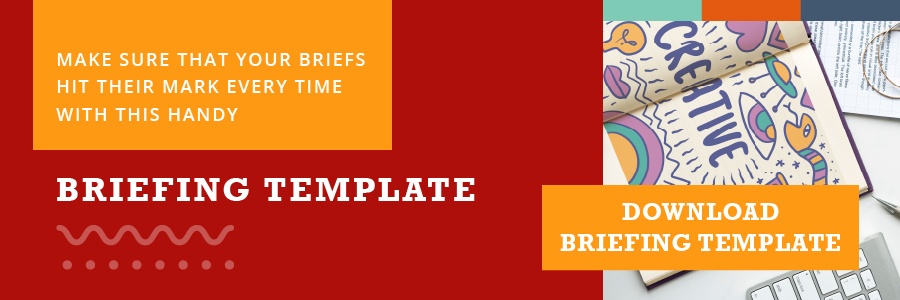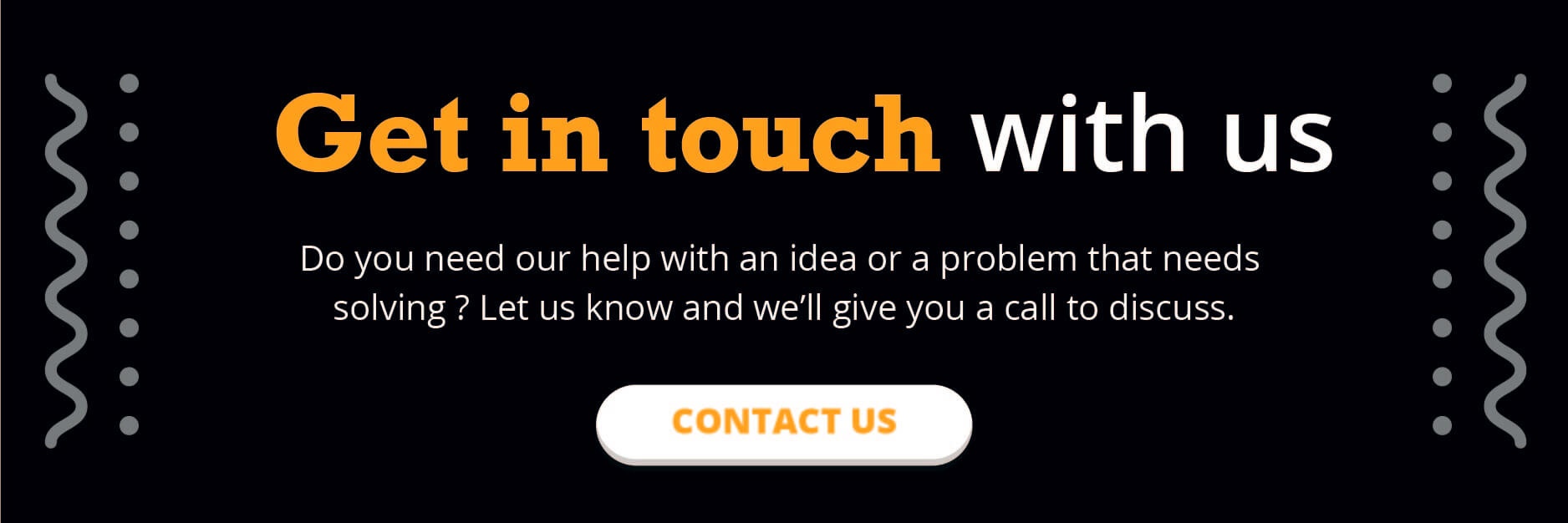.png?width=711&name=Untitled%20design%20(36).png)
Briefing is an essential part of the relationship between client and agency. This handy article is written for clients to help guide the briefing process.
A creative brief is a collaborative process between a client and their agency, and can be the pain point of many creative relationships.
Our team - with many years of collective experience working with clients in many different industries - put together this helpful guide to briefing for clients. We suggest you download our Creative Brief Template to see an example of how a brief should look. You can use this guide and checklist to make your briefing process smooth and seamless.
This article should help you identify what your agency needs to understand from a brief in order to deliver campaigns that meet your objectives. Our goal is to assist with clearer communication to help clients get better results. You can also share this with your agency if you feel they’re not quite “getting it”.
Enjoy!
Checklist for clients before you brief your agency
There are some vital things you and your agency need to clear up and fully understand before a brief leaves the door.
Do you know what success looks like for this project?
Remember that no advert can achieve everything. Though the ultimate aim for all marketing is to drive sales, that might not be the immediate goal of the creative content you’re putting out there. Make sure you and your agency are on the same page about what this specific piece of marketing content is going to achieve - is this ad going to spread the word about your brand, lead to more sales or drive social media followers? Understanding your goals is an essential first step before your put together your brief.
Do you know your budget for the campaign?
This is a pretty big part of what comes into an agency pitch. They won’t show you the golden standard if you can only afford the brass - but they will make the brass as strategic and effective as possible.
Do I know what problem this project is solving?
This helps clarify the success of the project. Is this campaign or project solving the problem that your brand is unknown in the marketplace, or that we need to push more product, or something else entirely? Understand this and communicate this with your agency, as this will direct the depth and breadth of the project’s execution and strategic direction (for example, is a billboard or a social media campaign better?)
Do you know who this advert is targeting?
Remember that who your advert is targeting dictates the approach taken to the message and execution. This also dictates the “soft” concepts behind your project - what does your product MEAN to someone?
Do you have any examples of projects you liked?
This is a big help for your agency! If they can understand what inspired you, and what you liked, it helps your agency to better develop a project that aligns with your vision.
Language! Does your agency understand what you mean?
Words like “fun” and “sexy” might be clear to you, but are vague to your agency who might interpret them completely differently. Our general rule is it avoid using adjectives in a brief because they can be easily misinterpreted.
How to use the briefing template
To use action the tips below, we recommend you use the briefing template we created to guide you. You can download our creative briefing template.
The below points briefly explain each section of the template and what type of information you would need to put there.
-
BACKGROUND: This should explain only the relevant context to the project, not the entire history of the brand.
-
OBJECTIVES: This affects your messaging. What does the campaign need to achieve? Don’t put in too many objectives, as this waters down your campaign. Rather separate out your objectives and do separate projects for each one.
-
PROPOSITION: What makes this product or service different?
-
DELIVERABLES: What medium is this being delivered on? This affects the project’s strategy. Do you have any examples of what has previously worked for your brand or products, and just as importantly, what hasn't worked in the past ?
-
TARGET MARKET/AUDIENCE: Remember, this isn’t for the entire brand! This is for this specific campaign or project.
-
TONE OF COMMUNICATION: This helps the agency to keep consistency in alignment with your other messaging.
-
BRANDING REQUIREMENTS: This should all be in the CI (corporate identity) documents.
-
KEY MESSAGES: What is the SINGLE most important thing this project needs to communicate.
-
CREATIVE CONCEPTS: Give your agency references to guide them! Tell them what you like from other brands that have inspired you. This will help them to understand how you’re hoping to communicate your message.
-
COMPETITORS: With this particular project, you might not be competing against all of your competitors. Who are the main ones you want to focus on for this campaign?
-
MANDATORY'S: These are the preventable mistakes. Do you need a legal disclaimer, for example.
Added to this, you need to be sure you communicate:
- Any NOs with the brand (things you KNOW you don’t want)
- Who the decision maker is (should the agency help you upsell this idea?)
- What would you like to see in the next meeting (a proposal, a first draft… what are your expectations?)
Questions to ask once you’ve received your campaign proposal for approval
Now that you’ve received your campaign proposal from your agency, here’s how to have a conversation about it and give constructive feedback.
What does success look like (is the objective met)?
Once you’ve received your project you need to ask yourself this essential question again: what does success look like for this project and does this concept meet that criteria?
Does this fit into your ideal budget?
Hopefully you have communicated this budget to your agency! Understanding if your project is in or out of budget helps to define scope.
Does this talk to the target market?
Has the campaign actually targeted who it is meant to?
Was this project completed within the agreed upon timeline?
This is important! Both the presentation and the delivery of the campaign need to have reasonable timelines, but the concepts need to be feasible to execute based on the timeline.
Has this your creative agency used your CI?
It’s essential the project uses the brand’s CI. Does the creative comply?
Have you communicated the NOs for this project … or do you need to do this now?
Are there any elements you specifically requested not to be in the project that slipped in anyway, or did you not communicate certain elements that absolutely can’t be in the project? Now is the time to reiterate this!
We hope these tips have helped you get better insights into the process of briefing. Get in touch if you need more guidance on preparing your next brief - we are always happy to help, and excited to take your brand or products to the next level.





SUBMIT YOUR COMMENT